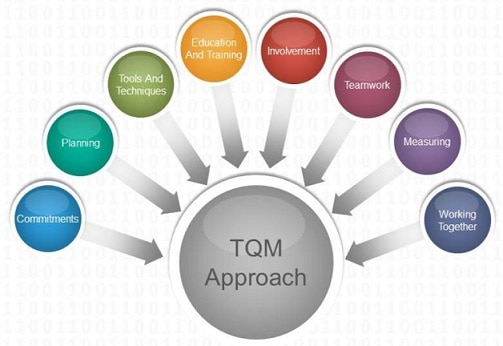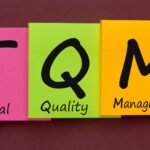Definition of Quality
Defining quality is far from easy. Just try to find why one finds that a product is not of quality. Quality refers to grade of service, product, reliability, safety, consistency and consumer’s perception. The notion of quality often subsumes a comparison between products. Product A is better than B and therefore has a higher quality (Lorente, 1998). However, the word “better” is vague and different definitions can be used. Quality: means “degree of excellence”; implies “comparison”, is not absolute. Quality – is to satisfy customers’ requirement continually, whereas Total Quality is to achieve quality at low cost. Broadly quality includes fitness for use, grade, degree of preference, degree of excellence and conformity to requirements.
According to British Standard BS 7850, quality is defined as “Quality is concerned with meeting the wants and need of customers” (Sivankalai and Yadav, 2012).
The dictionary has many definitions of “quality”. A short definition that has achieved acceptance is: “Quality is Customer Satisfaction”. “Fitness for use” is an alternative short definition (Walton, 1990). Here, customer means anyone who is impacted by the product or process.
Deming (1986) defines “Quality is a predictable degree of uniformity and dependability, at low cost and suited to the market”.
According to ISO 8402, quality is “the totality of features and characteristics of a product or service that bear on its ability to satisfy stated or implied needs”.
Dimensions of Quality
The following are the components given by Juran (2005) reveal the dimensions of quality.
1. Manufacturing Industries Service Industries
2. Product Features Accuracy
3. Performance Timeliness
4. Reliability Completeness
5. Durability, Friendliness and Courtesy
6. Ease of use Anticipating Customer needs
7. Serviceability Knowledge of Server
8. Esthetics
9. Availability reputation
10. Reputation
Quality Planning
Quality planning is the pre-determined activities in order to achieve conformation to the requirements. Many organizations are finding that strategic quality plans and business plans are inseparable. The quality planning procedure given by (Juran, 2005) has the following steps:
· Identify the customers
· Determine their needs
· Translate those needs into our language
· Develop a product that can respond to those needs
· Optimize the product features to meet our and customer needs
Quality Costs
All organizations make use of the concept of identifying the costs needed to carry out the various functions – product development, marketing, personnel, production etc., Until the 1950’s this cost concept had not been extended to quality function, except for the departmental activities of inspection and testing. During the 1950’s the concept of “Quality Cost” emerged. Different people assigned different meanings to the term. Some people equated quality cost with the cost of attaining quality; some people equated the term with the extra incurred due to poor quality. But, the widely accepted thing is “Quality cost is the extra cost incurred due to poor or bad quality of the product or service” (Juran, 2005).
Categories of Quality Cost
Many companies summarize quality costs into four broad categories. They are;
a) Internal failure costs – The cost associated with defects that are found prior to transfer of the product to the customer.
b) External failure costs – The cost associated with defects that are found after product is shipped to the customer.
c) Appraisal costs – The cost incurred in determining the degree of conformance to quality requirement.
d) Prevention costs – The cost incurred in keeping failure and appraisal costs to a minimum. Sometimes we can also include the hidden costs i.e. implicit costs (Juran, 2005).
Emerging Quality Cost Model
It is been argued that higher quality doesn’t mean higher costs. The companies estimate quality costs for the following reasons:
a) To quantifying size of the quality problem in the language of money improves communication between middle managers and upper managers.
b) To identify major opportunities for cost reduction.
c) To identify the opportunities for reducing customer dissatisfaction and associated threats to product salability.
The main focus of TQM was and is continuous quality improvement in the areas of product or service, employer-employee relations, and consumer-business relations using the following 14 Deming’s Principles.
1. Create constancy of purpose for improvement of product and service;
2. Adopt the new philosophy;
3. Cease dependence on mass inspection to achieve quality;
4. End the practice of awarding business on the basis of a price tag-instead, minimize the total cost;
5. Improve constantly and forever the system of production and service;
6. Institute training for all employees;
7. Adopt and institute leadership;
8. Drive out fear;
9. Break down barriers between staff areas;
10. Eliminate slogans, exhortations, and targets for the work force;
11. Eliminate numerical quotas for the work force and eliminate numerical goals for people in management;
12. Remove barriers that rob people of pride in their work;
13. Encourage education and self-improvement for everyone;
14. Take action to accomplish the transformation”


